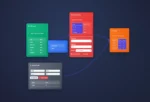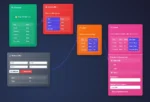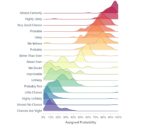
by tyler garrett | May 29, 2025 | Data Management
In the fast-paced landscape of modern data-driven business, clarity surrounding your operational data isn’t just helpful—it’s essential. Hidden technical metadata, often overlooked yet deeply influential to data governance and insights accuracy, forms the backbone of successful business intelligence and analytics initiatives. Metadata invisibly drives decision-making processes by providing crucial context, ensuring reliability, and enabling seamless integrations. Business leaders and key technology decision-makers can no longer afford to consider technical metadata as a secondary thought or a merely invisible support layer. With expertise-driven insights, let’s unveil the significance of effective hidden technical metadata management and strategic exposure to amplify your organization’s analytics and innovation capabilities.
Demystifying Technical Metadata: Underappreciated Yet Indispensable
Technical metadata is the information that provides detail and context about data’s structure, format, transformations, storage locations, and lineage. While business and semantic metadata receive significant attention due to their direct alignment with user perspectives, technical metadata remains largely behind the curtain—visible mainly to data engineers, architects, and platform administrators.
Despite its subtle presence, technical metadata forms the foundational basis for all analytics excellence. It ensures that insights derived via platforms like Tableau Desktop and Data Extract BI Software remain accurate by clearly communicating definitions, transformations, and lineage. Technical metadata manages critical information such as API endpoints, schema versions for databases like SQL Server, dependencies in data transformation pipelines, and traceability in machine learning model development.
Organizations that overlook technical metadata ultimately risk inconsistency, compliance gaps, and technical debt—potentially leading to business-critical failures or suboptimal decision-making processes. Forward-thinking enterprises thus understand that unlocking the power of proper metadata management significantly enhances agility, data governance, and trusted decision-making processes in analytics and software innovation.
The Hidden Risks of Ignoring Technical Metadata Management
Poor technical metadata management often manifests through unclear data lineage, questionable analytical outputs, significant compliance inefficiencies, and higher operational risks. Decision-makers relying on analytics without accurate metadata risk making ill-informed judgments regarding customer behaviors, operational efficiency, or long-term strategic initiatives.
Moreover, absence or mismanagement of technical metadata leads to unclear documentation and limits data traceability, creating challenges in compliance audits, regulatory processes, or data governance strategies. Especially when dealing with advanced analytical methods such as machine learning or semantic embeddings for business intelligence, robust technical metadata becomes essential to maintain accountability for complex, AI-driven decisions.
Companies in rapidly moving industries or tech hubs, such as Austin’s thriving data-centric workforce outlined in the impact of data analytics on the Austin job market, heavily depend on effective metadata management. Clearly defined metadata governance significantly minimizes risks, optimizes resource allocation, and elevates insight credibility, directly translating into better-informed strategic decisions and increased competitiveness.
Strategic Exposure of Technical Metadata: From Hidden Insights to Visible Benefits
The strategic exposure of technical metadata across organizations yields extensive benefits, driving clarity across technological boundaries and translating complex backend data contexts into actionable insights. When technical metadata is systematically captured, documented, and seamlessly accessible, stakeholders—from technical data scientists to senior business executives—can make clearer connections between raw information sources, transformations, and final visualizations.
For example, organizations that strategically expose API endpoints and metadata information can accelerate analytics workflows, speeding up the integration process, as shown in solutions that send Facebook data to Google BigQuery using Node.js. Optimizing visual representation effectiveness through structural metadata can elevate business intelligence tool performance and ensure trust amongst teams.
Effective metadata management that strategically presents crucial lineage and transformation paths gives immense credibility and transparency, building deeper trust. Stakeholders can confidently query, validate, and interpret complex visualizations, knowing the underlying contexts are reliably documented. Strategic exposure translates hidden metadata value into powerful, decision-oriented assets that bolster competitiveness and enhance organizational responsiveness.
Innovative Techniques to Reveal Hidden Technical Metadata
Advances in technical metadata exposure now leverage innovative technologies such as machine learning, semantic modeling, and natural language processing (NLP). Platforms delivering next-level insights integrate metadata exposure as an automated and collaborative part of their capabilities. Metadata extraction and presentation even extend to sophisticated visualizations, like dynamically-created lineage maps, interactive dashboards, or augmented analytics embedded in business intelligence software like Tableau.
For instance, techniques outlined in our piece Visualizing Uncertainty: Techniques for Representing Data Confidence, illustrate how leveraging metadata-driven insights can strategically quantify and visually communicate data certainty or uncertainty levels. Similarly, advanced semantic embedding tools become powerful differentiators, going beyond keyword-centric metadata explorations anchored in robust technical metadata management practices.
Innovative boundary-pushing areas, such as those outlined in exploring quantum computing, become significantly more manageable when robust metadata management provides clarity about experimentation parameters, result lineage, and detailed historical records. Modernizing metadata management outcomes can also actively enhance inventory optimization efforts, as demonstrated in successful supply-chain analytics strategies discussed in maximizing profitability through optimized inventory levels.
Implementing Robust Technical Metadata Management: Practical Steps for Success
Adopting robust technical metadata management strategies begins with developing clear organizational policies, standardizing definitions and documentation practices, and establishing clear metadata governance accountability. Formulating a metadata-centric mindset means seeing metadata management not merely as occasional documentation processes but as ongoing opportunities to build capability for effortless decision-making.
Leveraging proactive operational strategies, businesses must adopt robust Metadata Management platforms that include clear lineage tracing, intuitive metadata analytics interfaces, API-led integration capabilities, and data cataloging features. Additionally, leaders should consider utilizing expert consultation, available leveraging specialized Microsoft SQL Server Consulting Services, alongside fast-evolving cloud data solution providers, to simplify and enhance integration complexities into manageable tactical steps.
Pragmatically, choosing the right technology platforms and ensuring well-trained data experts manage metadata are essential initial steps. Regular metadata audits, agile data governance methodologies, and processes continuously integrated into analytics workflows elevate technical metadata as an intrinsic element of data excellence—being proactive, predictable, and empowering teams to maximize ROI on analytics technology investments.
The Future Outlook: Combining Technical Metadata Management with Human Ingenuity
While tools and technology form the necessary infrastructure, the most significant metadata management investments are ultimately human capital and innovative mindsets. Successful metadata governance is not merely an IT department cognitive exercise; it is integrated strategically across the organization as people communicate clearly, transparently, and collaboratively about increasingly complex data-driven opportunities.
Human teams equipped with robust technical metadata documentation can maximize strategic impact, translate immediate insights into actionable strategic decisions, and swiftly mitigate operational or governance risks. Leaders who prioritize data-driven collaboration and metadata transparency forge resilient businesses positioned for operational excellence, strategic flexibility, and long-term growth.
As we look ahead, the best data-driven entities will elevate technical metadata from a hidden support function to strategic exposure. A culture encouraging continuous metadata enrichment, clarity, and collaboration, combined with strong human ingenuity, becomes a cornerstone of long-term competitive advantage—empowering businesses to continually innovate, deliver unprecedented insights, and maintain leadership in their industries.
Ultimately, conveying technical metadata effectively is not about revealing secrets hidden within datasheets and schema—it’s about enabling teams to build exceptional, trustworthy, and accountable analytical platforms from clearly understood foundations.
Thank you for your support, follow DEV3LOPCOM, LLC on LinkedIn and YouTube.

by tyler garrett | May 28, 2025 | Data Visual
Successful analytics dashboards must do more than simply aggregate data—they must guide users to insights clearly and intuitively. As decision-makers increasingly rely on data for strategic moves, it is crucial to ensure dashboards communicate information efficiently and effectively. Gestalt principles, rooted in psychological concepts about human perception, offer a robust toolkit for designing analytics dashboards that capture attention, reduce cognitive overload, and deliver valuable insights at a glance. Understanding and practically applying these principles can dramatically improve user experiences, accelerate decision-making, and drive organizational innovation. At our software consulting practice, we consistently leverage Gestalt psychology within our data visualization consulting services, crafting solutions tailored precisely to our clients’ analytical needs.
Why Gestalt Principles Matter in Analytics Dashboard Design
The Gestalt school of psychology emphasizes that human brains interpret visual elements as complete patterns or unified wholes rather than collections of separate elements. Dashboard designers can effectively apply these principles to ensure users naturally perceive connections between data points and insights. By arranging visual elements according to the Gestalt laws of similarity, proximity, continuity, and closure, dashboards become intuitive, user-friendly, and conducive to quick interpretation. Decision-makers often use dashboards under extreme time constraints; hence, leveraging perceptual psychology significantly cuts down interpretation times, reduces errors, and ultimately informs smarter business strategies and effective data-driven decision-making processes.
Moreover, within large enterprises, users typically face information overload. With vast amounts of data from varied sources, visualizations lacking clearly defined hierarchies can rapidly overwhelm and confuse users. By properly employing Gestalt principles, dashboards become distinctly purposeful and immediately actionable. For example, we frequently help clients optimize complex analytics systems by combining various visualization libraries into one unified experience, a process we discuss at length in our article on polyglot visualization libraries.
Principles of Similarity and Proximity: Creating Order through Visual Grouping
The Principle of Similarity
Gestalt’s principle of similarity suggests that elements sharing visual characteristics such as color, shape, size, or orientation are automatically grouped together by our brains. Successful dashboard design utilizes this by categorizing data points through consistent styling rules. For instance, a dashboard may consistently color KPIs in one shade, trend indicators in another, or apply distinct iconography to metrics belonging to specific business domains. This visual consistency helps communicate immediate meaning, allowing stakeholders to grasp complex data quickly without unnecessary cognitive processing.
Additionally, similarity organizes dashboards intuitively, allowing users to naturally associate related variables and easily differentiate distinct categories of data. Careful deployment of visuals following similarity principles enables stakeholders to effectively use dashboards as strategic decision-making tools, as discussed further in our guide on designing effective data teams, illustrating how alignment in visuals mirrors organizational clarity.
The Principle of Proximity
Likewise, proximity plays a critical role in dashboard organization. Elements positioned close together are perceived to have stronger relationships than elements spaced apart. In practice, placing complementary insights and metrics side-by-side enables natural interpretation without the explicit cognitive effort of drawing lines or reading detailed explanations. Conversely, unrelated data points and categories should maintain adequate separation to ensure viewers quickly grasp that these elements represent distinct concepts.
Principles of Continuity and Closure: Leading Users to Insights Efficiently
The Principle of Continuity
Continuity dictates viewers perceive continuous patterns or sequences rather than disconnected elements, guiding the eye smoothly through the interface. Dashboards employing continuity lead users logically through data stories; trend lines, regression analyses, and cumulative graphs all rely upon continuity. By smoothing visual transitions and clearly mapping directional elements or chronologically arranged data points, dashboards inherently provide an intuitive flow of information.
To perfect continuity on a visualization level, it’s essential to represent data accurately, avoiding misleading visuals or inappropriate scales, as described in our deep dive on appropriate scales and axes in data representation. Visual continuity reinforces trust, enabling confident decisions because dashboards convincingly and truthfully reflect real-world data dynamics.
The Principle of Closure
The Gestalt principle of closure enables users to mentally “fill in” incomplete visuals or gaps to form coherent and meaningful data perceptions. In dashboard design, closure encourages simpler, more focused visualization methods by allowing users to infer missing elements based upon presented patterns. Simplified visuals remove clutter and direct focus towards critical meaning, improving interpretative clarity and minimizing cognitive load while delivering essential insights.
Professional dashboard designers leverage closure to eliminate redundant labels or visuals without sacrificing meaning, often using minimalistic visuals and accommodating users’ natural cognitive tendencies. At our consultancy, we integrate such rigorously simplified designs into our micro application developments, enabling streamlined interactions that comprehensively improve company agility.
Figure-Ground Principle: Clarifying Focus and Context for Decision-Making
The figure-ground principle guides dashboard creators to differentiate clearly and explicitly between focal points (data insights) and contextual or secondary elements (grids, labels, or support information). Achieving separation helps stakeholders quickly zero-in on key metrics or insights—crucial for rapid business intelligence consumption. Distinguishing between foreground data points and background context enhances user navigation, attentive focus, and decisiveness, resulting in dashboards that serve users directly, enabling them to extract relevant insights efficiently.
To optimize the foreground-background balance, designers can carefully employ contrast, subtle gradients, boundaries, and selective transparency. When executed correctly, dashboards deliver superior user experiences that empower stakeholders to rapidly derive value, comparable to efficiently querying data through intelligent filtering methods, as we highlight in our technical breakdown of the SQL IN operator for filtering multiple values.
Simplicity and Symmetry: Reducing Cognitive Overload and Enhancing Comprehension
Simplicity and symmetry, essential concepts within Gestalt principles, help avoid confusion by reducing unnecessary visual complexity. Dashboards should respect balance and visual clarity to ensure easy interpretation of information, especially relevant amidst high-volume data environments. Carefully positioned visualizations, thoughtfully used white space, and balanced arrangements allow users to concentrate effortlessly on primary insights without distractions.
Similarly, dashboard simplicity directly impacts performance and responsiveness. Optimized designs reduce visual rendering time, avoid overwhelming databases, and streamline computational resources, all of which accelerate dashboard interaction—paralleling technical optimizations detailed in our blog on thread local storage optimization techniques. Consistent simplicity prevents decision fatigue, ultimately improving strategic clarity, dashboard usability, and cost-effectiveness of data solutions.
Gestalt Principles Supporting Advanced Analytics: Beyond Dashboard Aesthetics
These principles not only enhance dashboard clarity and ease-of-use but also directly support advanced analytics methodologies. For example, clearly aligning dashboard visualizations with machine learning outcomes reinforces decision-makers’ understanding and trust in predictive insights. Carefully applied Gestalt principles amplify value from runtime query optimization leveraging reinforcement learning, further extending dashboards’ strategic impact beyond mere visual utility. Thoughtful visualization analytically complements sophisticated data modeling, ensuring predictive and prescriptive outcomes become actionable business strategies.
In this data-driven era, successful organizations realize that analytics dashboards are not secondary tools—they are core business assets. Employing Gestalt principles strategically through well-defined visual interactions, organizations gain a competitive advantage by capitalizing on powerful insights offered within modern analytics dashboards. As expert dashboard developers and analytics clarity strategists, we consistently see firsthand how conscientious analytics dashboard design can significantly transform decision-making effectiveness, organizational workflows, and overall business performance.
Thank you for your support, follow DEV3LOPCOM, LLC on LinkedIn and YouTube.

by tyler garrett | May 28, 2025 | Data Management
In today’s fast-paced digital landscape, businesses seek agility, flexibility, and faster insights into their operations. Effective data governance isn’t merely regulatory adherence—it’s an indispensable enabler of innovation, data accuracy, and strategic growth. Organizations are often composed of separate business units, each operating within diverse contexts, requiring data analytics systems as unique as their missions. A federated data governance approach elegantly balances centralized standardization with decentralized autonomy, empowering each unit’s unique needs while maintaining cohesive governance practices. In the era of data-driven decision-making, a strategically implemented federated data governance architecture transforms data from mere assets into strategic business differentiators. Let’s explore exactly how your business units can shift from siloed silences to harmoniously orchestrated data collaboration and innovation at scale.
Understanding Federated Data Governance
Federated data governance democratizes control and accountability from a strictly centralized platform to a more distributed yet coordinated model. Under a federated governance structure, different business units retain certain decision-making powers regarding standards, usage policies, data definitions, and stewardship roles pertinent to their distinctive operational contexts. Central authorities, meanwhile, focus on creating foundational policies, frameworks, standardized tools, and infrastructure that maintain consistency while meeting overarching governance policies and regulations. This balance ensures agility and responsiveness at the business-unit level while providing meaningful, centralized oversight that mitigates data duplication and ensures overall compliance.
Unlike traditional, rigid, centralized data management environments, federated governance fosters collaboration significantly better, particularly amid diverse teams and geographically decentralized offices. This encourages innovation within individual departments and boosts analytics flexibility, vital to addressing unique contexts rapidly. Adopting federated governance leverages the principles of data stewardship and democratized usage previously covered in our comprehensive blog, Data Governance Practices – A Comprehensive Guide. Organizations positioning themselves as forward-thinking and adaptable must embrace this governance model to keep pace with competitive markets and fluctuating business requirements.
The Strategic Advantages of Implementing Federated Governance
Empowered Decision Making at the Business Unit Level
A major advantage of federated governance is giving business units authority to make quicker, informed decisions aligned to their specific goals without seeking constant approval from a centralized unit. By establishing data policies pertinent directly to their immediate business needs, local governance teams become strategic partners, empowered to respond promptly to emerging customer demands, market trends, and operational realities. For instance, teams focused on fraud detection can rapidly leverage innovative data-streaming technologies as outlined in our blog on Spreadsheets to Streaming: How Fraud Detection Has Evolved, applying timely changes to data governance around real-time decision-making pipelines.
Enhanced Collaboration Across Business Units
Federated data governance helps break down silos and promotes organic collaboration across the business. Units that once worked independently share best practices, analytical techniques, and developed tools, improving overall organizational efficiency. For instance, analytics initiatives such as those described in our detailed guide on Building Self-Service Analytics Platforms can become standardized across multiple teams, encouraging broader utilization and minimizing duplication of effort.
Establishing an Effective Federated Data Governance Framework
Selecting Suitable Governance Roles and Responsibilities
Successful federated governance implementation begins by defining clear roles and responsibilities. A centralized governance team must outline overarching policies, standards, and frameworks applied organization-wide, such as rules regarding privacy, compliance, and enterprise metadata management. At the business-unit level, data stewards and analysts handle context-specific policy decisions and management. A common structural model includes a central council overseeing enterprise-wide initiatives, with smaller decentralized teams managing localized day-to-day governance and analytics operations. Clearly assigned roles enable smooth workflows, eliminate ambiguity, and allow data stewardship to become a strategic function rather than simply administrative oversight.
Implementing Effective Supporting Technologies and Tools
Implementing federated governance demands robust technological infrastructure capable of seamless collaboration and standardization. Leverage modern analytical software solutions, such as Tableau, to empower business units to create accurate, accessible dashboards that comply with governing standards. Considering advanced analytics software significantly enhances return on investment, a theme we explored extensively in our detailed article Improving ROI on Reporting SaaS Software. By integrating advanced Tableau consulting services, businesses effectively establish analytics platforms that foster accuracy, accessibility, consistency, and compliance across units.
Additionally, consider strong data engineering practices, such as those discussed in our blog Type-Safe Data Pipeline Development with Strongly Typed Languages. Consistently structured, type-safe pipelines enhance reliability, ease auditing, minimize errors, simplify regulatory adherence and streamline federated governance implementation.
Tackling Implementation Challenges Head-On
Addressing Cultural and Operational Resistance
Effective federated governance often faces resistance as organizational culture potentially clashes with newly decentralized responsibilities. Investing in clear, targeted communication strategies helps stakeholders understand the benefits of effective governance frameworks, addressing fears and misconceptions proactively. Empower your team members by showcasing success stories, clearly articulating how transitioning to data stewardship roles benefits both individuals and the broader company, similar to the transition described in Career Transitioning from Software Engineering to Data Engineering.
Managing Complex Platform Integration Issues
Integrating complex technical platforms and data silos represents another frequent challenge during federated governance implementation. Consider your existing architecture when choosing analytics approaches like techniques outlined in our guide on Columnar vs Document-Based Storage: Granular Performance Analysis. Evaluating these types of technical considerations up-front will facilitate smoother integration across formerly independent data environments. Additionally, implement consistent aggregate techniques as outlined in our blog on Harnessing Aggregate Functions in SQL: Utilizing MIN, MAX, AVG, SUM and More to ensure accurate and reliable multi-dimensional analytics reporting.
Fostering Innovation through Federated Governance
A carefully implemented federated governance structure fosters innovation by freeing business units from centralized bottlenecks while ensuring staple operational requirements remain standardized and compliant. Business units can more rapidly explore and innovate data analytics solutions without the constraint of cumbersome approval chains or bureaucratic delays. Incorporating data visualization best practices, as explored in our detailed explanation of creating impactful dashboards like our Bubble Chart Matrix for Multivariate Correlation Analysis, allows teams to expedite powerful, actionable insights.
This shared innovative environment creates intellectual momentum driving broader analytics adoption and continuous improvement in governance practices, ultimately yielding a strategic business advantage for each individual unit and the enterprise as a whole.
Ongoing Evaluation to Ensure Continued Governance Success
The journey of federated governance doesn’t end at implementation—it is an ongoing cycle of evaluation, adjustment, and improvement. Regular assessments of your governance strategies, including compliance frameworks, data stewardship performance, and analytics maturity levels, keep governance aligned to shifting operational demands and industry changes. Implement metrics to measure the effectiveness of governance across units, and continuously refine processes based on data-driven feedback. This approach assures sustained value and consistent improvement in analytics initiatives reflective of evolving business needs and market conditions.
Federated data governance, when executed strategically, strengthens agility, innovation, and analytical capabilities. By implementing this unified yet decentralized approach today, your business positions itself for unprecedented data-driven growth tomorrow.
Thank you for your support, follow DEV3LOPCOM, LLC on LinkedIn and YouTube.

by tyler garrett | May 27, 2025 | Data Management
In a technology ecosystem rich with complexity, data acts as an organization’s digital lifeblood—flowing, evolving, and connecting each system, process, and stakeholder. Yet, as data assets scatter across cloud applications, data lakes, analytics tools, and legacy databases, the origin and transformation of each piece of data often become obscured. Understanding the complete journey of your data—its genealogy or lineage—is crucial when it comes to accurate analytics, regulatory compliance, data quality governance, and insightful decision-making. By clearly tracing data elements across systems, tech-savvy organizations establish strategic clarity, maximizing both business agility and data utility. Welcome to the dynamic practice of data element genealogy tracing—a critical methodology enabling organizations to harness fully the transformative power of data.
Decoding the Importance of Data Element Genealogy
Data element genealogy, often referred to as data lineage, enables organizations to track data throughout its lifecycle—from inception to its consumption in analytics or applications. Like tracing family lines on a genealogy tree, organizations can similarly capture where data originates, showing clearly all transformations, impacts, and end-points as data moves across platforms. This transparency is essential for maintaining data accuracy and consistency, showcasing trustworthiness of insights generated by analytic platforms. For organizations utilizing leading analytics solutions—such as those we regularly implement through our Power BI consulting services—robust genealogy tracing quickly surfaces the root causes of data quality issues, streamlining troubleshooting and expediting resolutions.
Furthermore, data governance regulatory mandates—like GDPR, CCPA, and industry-specific compliance frameworks—demand precise tracking of where personal and confidential data resides throughout its lifecycle. A clearly structured lineage map helps facilitate privacy policy implementations, making the user experience transparent and compliance more intuitive, as we’ve explored previously in our post on enhancing user experience through clear privacy policies. Consequently, rigorous data genealogy tracing transcends operational efficiency, directly supporting strategic trust-building across customer-facing practices, analytics-driven decisions, and regulatory compliance.
The Anatomy of Effective Data Genealogy Tracing
Starting at the Source: System and Data Discovery
Effective data lineage tracing starts by thoroughly identifying the foundational location where data originates. Data architects must undertake meticulous system and data discovery—inclusive of gathering metadata, understanding database schemas, data table relationships and performing deep dives into data storage structures. These initial investigative tasks usually involve working closely with underlying database infrastructures, such as MySQL databases frequently encountered in diverse tech environments. As such, teams must ensure familiarity with foundational database implementations—a process we’ve simplified for clients through our guide on how to install MySQL effectively.
Understanding the point-of-origin also involves validating data formats, ensuring alignment with expected schemas, and implementing data quality measures. Once identified, documented schemas, standards, and naming conventions should anchor your genealogical mapping, providing traceability back to the initial source and ensuring reliability throughout hierarchical lineage views.
Documenting Transformations: Data Pipeline Artistry
Both traditional ETL processes and evolving data integration patterns—including ELT and choreography-based data pipelines—present transformations occurring as data moves between systems. Regardless of pipeline style, clearly capturing and documenting this evolution is paramount. As data migrates or synchronizes between systems, such as in bidirectional synchronization, clear capturing of transformations ensures transparency and accuracy throughout analytic workflows.
Complex transformations often incorporate nuanced business logic, advanced filtering criteria, or logical operators within SQL statements—concepts outlined in our earlier detailed analysis on harnessing logical operators in SQL. Accurate documentation at this stage requires precision in capturing such logic. Advanced data pipeline techniques, including asynchronous ETL choreographies, further underscore the necessity for systematic traceability to ensure all modifications remain thoroughly transparent and maintainable at scale.
Visualizing Lineage: Data Mapping and Analytics Tools Integration
Having identified sources and transformations, the effective visualization of data genealogy offers direct operational advantages. Platforms like Power BI and Tableau have built-in capabilities that support visualization of data lineage transparently, enhancing stakeholder understanding across departments. Organizations initially leveraging these analytic tools need practical guidance to shorten time-to-value, similar to the onboarding outlined in our resource-rich step-by-step guide to installing Tableau Desktop properly.
Interactive lineage visualizations offer immediately comprehensible layout of data origin and transformations. These generate company-wide buy-in and contribute valuable insights during troubleshooting, regulatory auditing, and advanced strategic analytics initiatives. The transparent visualization of data journeys complements well-designed dashboards—like the Colibri Google Analytics Tableau dashboard we recently developed—allowing executives to confidently trust the insights presented to them.
Addressing Multi-Tenant Environments through Parameterized Lineage
The rapid proliferation and growth of multi-tenant SaaS applications require sophisticated, adaptable lineage tracing approaches, specifically tailored to multi-tenant data processing. Enterprises may operate similar data workflows across different customers, making parameter-driven pipeline tracking essential. In our exploration of parameterizing data pipelines, we’ve showcased how traceability standards adapt seamlessly to support individualized tenant-level insights.
Parameterization streamlines lineage tracking at scale while simplifying data governance complexities. Businesses can dynamically configure data lineage processes to correctly reflect the nuanced data flows unique to each tenant or sub-organization efficiently. Applying parameterization extends lineage methodologies beyond mere documentation—empowering actionable insights and intuitive management practices that strengthen governance and accelerate analytics expansions in rapidly scaled environments.
Operationalizing and Automating Data Genealogy Practices
Strategically, your organization’s data lineage tracing methodology must evolve beyond one-time exercises into systematic, fully integrated practices. Incorporating data lineage visualization and validation into automated DevOps and DataOps pipelines ensures continuous documenting and monitoring. Automation of lineage tracing provides an ongoing ability to surface data issues alerts and enables powerful predictive impact analyses proactively.
Effective operationalization leverages best-practice data governance and lineage tools—like metadata management, advanced analytics platforms, and cloud engineering solutions. Integrating CI/CD processes for data pipelines harnesses machine learning models that automatically detect lineage drift or anomalies, significantly reducing manual overhead requirements. Operationalizing your lineage practices thus creates substantial business agility advantages, truly transforming cultural data maturity into sustained innovation momentum.
Future-proofing Your Data Strategy with Genealogy Tracing
Strategic business decisions increasingly rely upon timely analytics and trust in underlying data integrity. Data lineage tracing provides reliability fundamental to any organization’s long-term digital transformation journey. Establishing lineage processes firmly embeds robust data governance mechanisms across future-oriented strategies. Applying modern lineage tracing methodologies empowers your organization by accelerating delivery speed, streamlining regulatory compliances, enhancing transparency, and promoting strategic clarity across distributed technology ecosystems.
At Dev3lop, we frequently guide decision-makers to integrate data genealogy tracing effectively, optimizing analytics-driven strategic decisions and organizational data maturity. By institutionalizing data lineage practices, organizations naturally elevate data standards, enabling unparalleled competitive intelligence, confident regulatory adherence, and sustained innovation.
Interested in integrating robust data lineage tracing across your complex systems architecture? Explore strategic data engineering, analytics, and data governance solutions with strategic clarity—begin the conversation with Dev3lop today.
Thank you for your support, follow DEV3LOPCOM, LLC on LinkedIn and YouTube.

by tyler garrett | May 27, 2025 | Data Management
In today’s fast-paced digital economy, aligning strategic business concepts with the right technological execution is critical. Too often, businesses witness a gap between visionary terms and their corresponding technological implementation, causing delays, misunderstandings, and misalignment across teams. Imagine bridging this gap with precision, providing your business stakeholders immediate clarity and your technical team actionable guidelines. That’s precisely what a Business Term to Technical Implementation Mapping Repository does. As a seasoned partner in Node.js consulting services, we stress the importance of well-defined mappings between strategic ambitions and technical solutions. In this blog, we will dive deep into how your business can leverage a mapping repository, align internal communication, enhance your workflow transparency, and strategically establish yourself as a data-empowered, innovative company.
What is a Business Term to Technical Implementation Mapping Repository?
A Business Term to Technical Implementation Mapping Repository is a structured collection or database, meticulously maintained to document the correlation between high-level business terminology and their corresponding technical implementations. Think of it as a translation guide, converting the language spoken in board meetings into technical workflows, architectures, diagrams, and code bases. At a technical level, it’s a robust reference that enables your data engineers, analysts, and software developers to rapidly determine infrastructure requirements that fulfill strategic business initiatives.
This repository goes beyond mere definitions. It links strategic terms, objectives, and KPIs to actual algorithms, data workflows, tables, software components, and deployment scripts. Essentially, it becomes an integral part of your organization’s innovation and digital transformation roadmap. Rather than losing hours emailing back-and-forth or holding numerous clarification meetings, stakeholders and tech teams source information directly from this organized storehouse. For instance, integrating complex analytics and visuals into reporting demands transparent mappings, guiding your team on how business descriptions translate technically, eventually ensuring accurate visualization of data creatively as per business expectations.
The establishment of this type of mapping repository is particularly beneficial in multi-disciplinary environments, global-scale implementations, and digital adopters seeking agile adaptability. It enables scalability, avoids confusion, accelerates time-to-market, and fosters self-sufficient, agile development teams ready to craft innovative solutions grounded in clear business-contextual understanding.
The Strategic Importance of Clear Business-Technical Alignments
Aligning technological implementation with strategic business terms is not a luxury—it’s an essential factor for organizational agility and proactive innovation. Clear alignment ensures everyone on your team—from business executives and data analysts to software engineers—operates on the same strategic page. Removing ambiguity within critical processes helps you avoid costly misunderstandings, project delays, and misalignment between project outcomes and initial expectations.
Furthermore, clear alignment builds trust through transparency of technical decisions and clear explanations of how technological solutions serve business values. It’s no wonder organizations spotlight transparent data-sharing methods within mapping repositories to guarantee that every stakeholder, including end-users, understands clearly the origin and importance of data-driven decisions. Clear mappings also allow quicker identification of gaps in technical implementations, which in turn accelerates innovation efforts.
A strategically managed mapping repository ensures smooth handovers and easy onboarding of new team members. As organizations expand, merge, or pivot, rapidly scaling teams can rely on an accessible, reliable, and updated reference to bridge knowledge gaps and save time during the knowledge-transfer processes. By embracing clarity in business-term mapping, companies empower staff to manage complexity with ease and confidence, focusing energies instead on innovating fresh solutions and exploring new business possibilities.
Achieving Cohesion through a Mapping Repository
Implementing and maintaining a clear mapping repository requires more than just documenting existing processes. It demands active collaboration between business leaders and technical teams, facilitating structured discussions around both strategic objectives and execution-level details. Through regular interactions, stakeholders define and refine technical implementations, identifying opportunities to optimize data flows, refine analytics models, or simplify technology infrastructures.
These collaborative sessions ensure continuous alignment between strategic ambitions and technical deployments, enabling organizations to respond dynamically to evolving business environments. A well-maintained repository identifies shared components easily, ultimately reducing redundancy, cutting costs, fostering reuse of logic, and strengthening governance. For example, leveraging alignment between business terminology and technical processes enables technical implementations like time-partitioned processing of historical data—making previously tricky technical domains understandable at a business strategic level.
This enduring cohesion facilitates quicker decision-making, reduces friction between teams, and enhances the overall effectiveness of digital transformation strategies. By keeping the mapping repository accessible and organized, decision-making becomes consistently data-driven and transparent, creating a smoother, streamlined inter-departmental workflow that empowers your enterprise teams to focus their energy towards innovation, creativity, and space to discover emerging technical opportunities.
The Role of AI and Automation in Enhancing Mappings
Artificial Intelligence (AI) and automation have revolutionized many aspects of data infrastructure and transformations. In the context of the Business-Term Mapping Repository, applying AI-enhanced data engineering workflows increases accuracy, maintains mappings efficiently, and quickly identifies potential gaps or inconsistencies. Machine learning capabilities assist in automating the extraction, categorization, and linking of business terminology to documentation, code repositories, and real-world implementations.
Automation frameworks can intelligently recognize similarities across business terminology, suggest related validations, and propose refinements of technical alignments, significantly reducing manual input. Harnessing these capabilities supports organizations in proactively sustaining the accuracy of the repository, ensuring it adapts dynamically as both business language and technology evolve.
Moreover, incorporating code generation practices for high-performance data transformations ensures that strategic business initiatives quickly materialize into technical results. AI-driven code-generation processes synergize effectively with the strategic mappings by swiftly translating strategic goals into reusable scripts, analysis algorithms, and operationalized models.
Practical Steps to Implement a Mapping Repository in Your Organization
Implementing a successful mapping repository begins with setting clear organizational objectives and involving key stakeholders—domain experts, solution architects, business analysts, and developers. Begin by auditing and documenting all current business terminologies, definitions, standards, and their implied technical counterparts. Determine initial key business terms and essential performance indicators to pilot the mapping activity. Leveraging automated tools like repository management platforms, development suites, databases, and service registries simplifies the documentation and collaboration work.
Consider introducing templated frameworks and linking entries directly to technical documentation, scripts, and architectural diagrams. Incorporate innovative solutions like Python-powered web scraping and tagging scripts for automating new business-term updates and ensuring periodic, proactive repository refreshes.
Strategy-wise, engaging third-party consulting practices or hourly software consulting expertise could significantly speed up your repository setup process. External experts provide neutral perspectives, strategic guidance, technical insights, and established best practices—ensuring a robust framework built on extensive real-world experience. Regular training sessions and workshops will further ensure successful adoption and sustained growth of the mapping repository across your organization.
Conclusion: A Mapping Repository is Your Strategic Advantage
In today’s complex business environments, building bridges that seamlessly connect business expectations and technological execution is the key to continued relevance and innovation. A Business Term to Technical Implementation Mapping Repository nurtures agility, clarity, collaboration, and enables proactive deployment of cutting-edge technology. In removing ambiguity from the equation, your organization can stay laser-focused on traditional core competencies while continuously evolving technologically and strategically.
Ready to utilize a mapping repository to optimize clarity and agility in your rapidly scaling and continuously innovating business? Don’t hesitate to strategically leverage our expertise in technical consulting, innovation enablement, and tailored service packages, positioning your company on a path toward streamlined communications, faster deployment, and clear, strategic innovation.
Take the first step toward integrating effective business-term mapping. You’ll experience improved understanding, strengthened collaboration, transparent alignment processes, innovation acceleration, and operationalized agility, ultimately positioning your business at the leading edge of its industry.
Tags: Data Strategy, Technical Implementation, AI workflows, Automation, Software Consulting, Data Visualization
Thank you for your support, follow DEV3LOPCOM, LLC on LinkedIn and YouTube.























